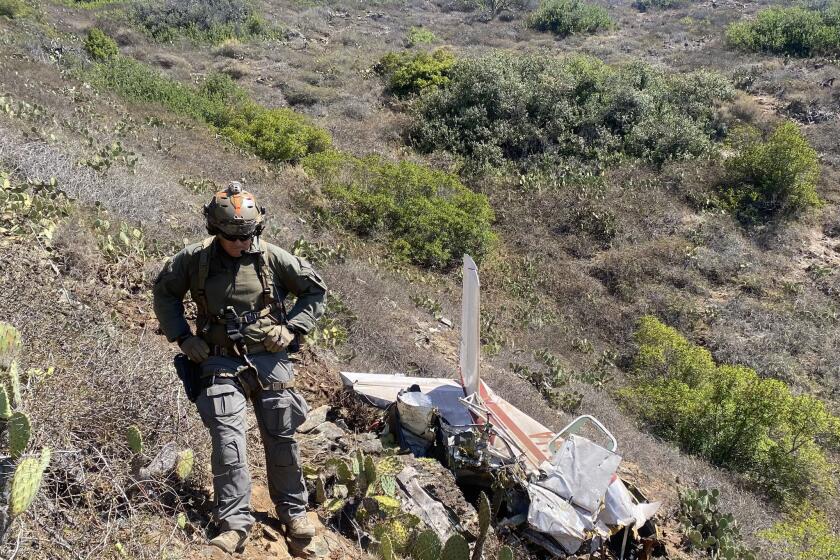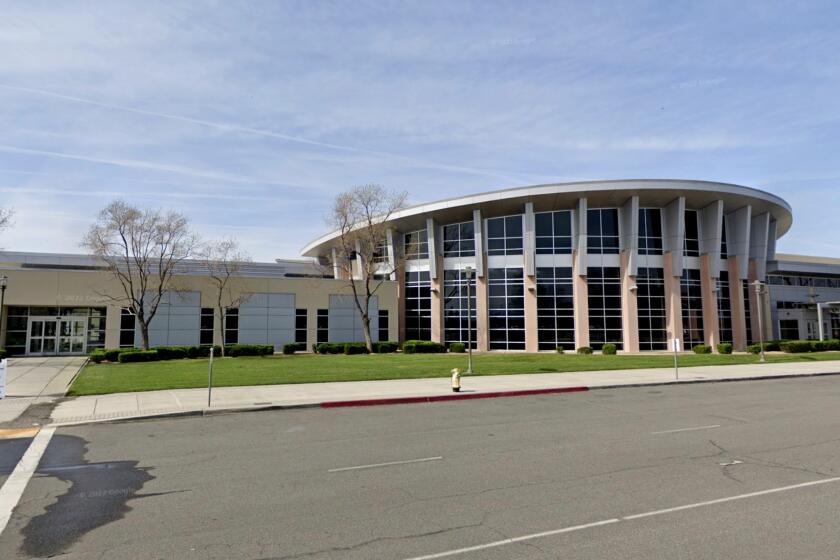Teen drives a parent to distraction
When I see one of my daughter’s names on my cellphone’s caller ID, I pause and take a deep breath as I flip the phone open.
Before speaking, I listen, heart pounding, for the sound of sirens, a wailing teen or the shout of an unfamiliar voice I heard five years ago and can’t forget: “Oh, my back! I can’t move! That girl hit me!”
If you’re the parent of a teenage driver who has already collided with something or someone in the streets, you know what I mean. You’re familiar with the way the panicked phone call from an accident scene changes everything, laying bare hazards you had willed yourself not to see.
That call came for me -- again -- while I was at work downtown last week. “Mom! I hit somebody!” my newest driver screamed, over and over, in answer to every question I asked.
The fear in her voice told me everything, except what I really needed to know.
Hit somebody? As in mowed down a pedestrian in a crosswalk? Or tapped the bumper of a car in a parking lot?
As I tried to pry facts from a hysterical 16-year-old, my frustration grew to match my terror.
Parents of teen drivers have cause to worry, statistics say. Automobile crashes are the leading cause of death for teenagers. Immaturity and lack of driving experience make 16-year-olds more dangerous behind the wheel than even the vision-impaired, slow-to-react elderly.
Parents may want to believe that if their kids don’t drink and drive, they won’t have accidents. But researchers for the Insurance Institute for Highway Safety found that one reason so many crashes occur in the first year after teens are licensed is that scatterbrained 16-year-olds simply underestimate the hazards of the road.
They misjudge distance and speed. They daydream, fiddle with the radio dial, try to answer cellphone calls. And they lack the confidence that comes with familiarity.
New state laws that keep inexperienced teenage drivers off the road after 11 p.m. and prohibit them from carrying passengers have cut fatality and accident rates.
But those same laws mandate only a measly six hours of behind-the-wheel training with a licensed instructor; it’s up to parents to provide the 50 hours of practice required before a teen can take the driving test.
“That makes it very hard for a teenager to learn all he needs to know to take a car safely out on the road alone,” said driving instructor Zack Tamir, a co-owner of Valley Bob’s driving school, where my oldest daughter -- three accidents, one her fault -- learned to drive six years ago.
“In the car with us, they drive like they’re told to drive,” Tamir said. “But when they get out on the road and nobody’s watching . . . that’s when things break down, and you can’t always know what’s going on.”
Actually, these days, the technology does exist to monitor young drivers and limit their distractions. There are GPS units that let you track your child’s speed and location online, and receive a text message if the limits you set are violated. Invest in a navigation system, and the soft voice of Big Sister tells young drivers when and where to turn, so they don’t have to deal with Mapquest miscues or hassle trying to read a map.
Whether those are good options is another question.
I think the best thing might be Tamir’s suggestion: Prepare for the inevitable. Each car at his driving school has an accident kit in its glove compartment -- a camera, a checklist of what to say and do, a place to record time, date, location, names and an account of what happened.
“Getting into an accident is part of driving,” Tamir said. “It’s going to happen. . . . You’re an inexperienced driver, you’re going to hit somebody. You just hope it’s only a fender-bender.”
Then, as I wrap up the interview, he tells me that as we spoke, he watched out the window of his Westwood office as one car rear-ended another.
My daughter’s accident was barely even a fender-bender. I couldn’t find a ding on her bumper, and there was no damage to the woman’s car she backed into.
That was a relief for me; I could send a child to UCLA for less than I’m paying each year for car insurance.
But it’s not just a car’s fender that bends when your teen is in an accident. Your perception of your child’s safety shifts. It gets harder to believe that driving lessons and air bags are all the armor a new driver needs.
Maybe little collisions are necessary lessons for teens about the magnitude of the responsibility. Driving is no longer just about convenience and freedom; it is a series of life-and-death decisions. At the least, an accident might leave you embarrassed, clogging up the street while you’re chewed out by an irate driver wondering, “How could you not see me?”
My daughter was so unnerved by her accident last week that I drove her to and from school the next day. I’ve learned from daughters one and two that getting back behind the wheel can be scary. She was driving by the weekend, of course -- worry free, it seemed.
I wish I could say the same for me. When my cellphone rang early Monday morning, I did some quick mental calculations -- What time had she left home? Would she be parked and already in class? -- before I let myself flip it open.
I don’t think I’ve ever been so happy to hear her crabby, early-morning voice asking me if I’d seen a missing notebook.
--


